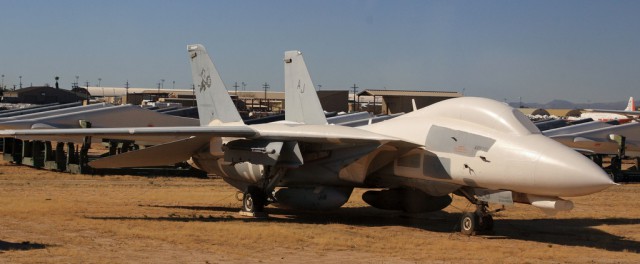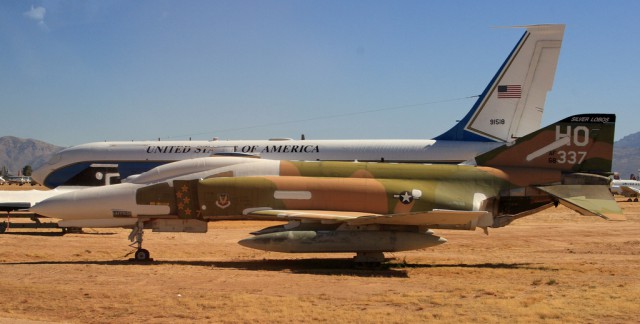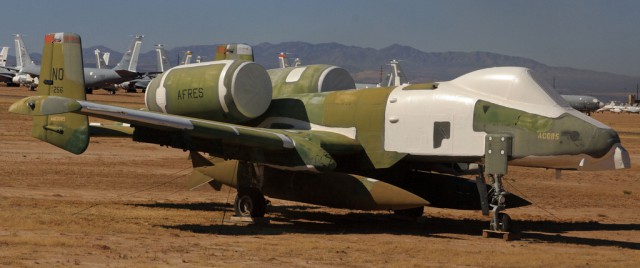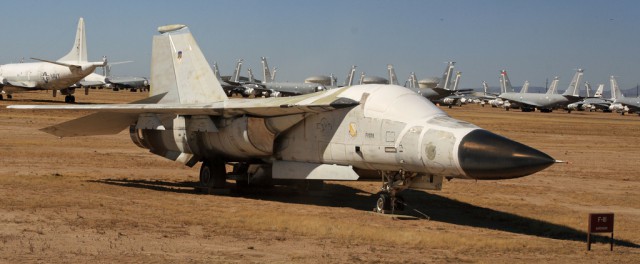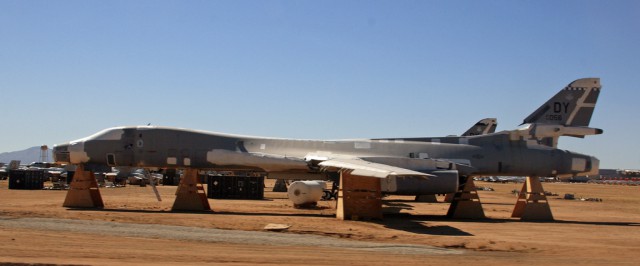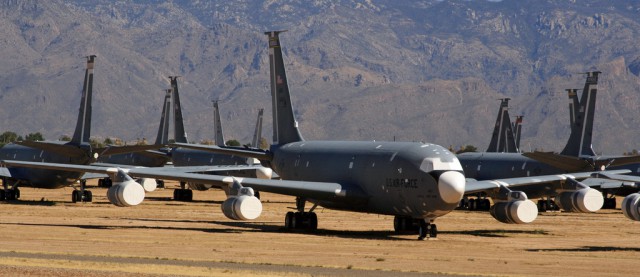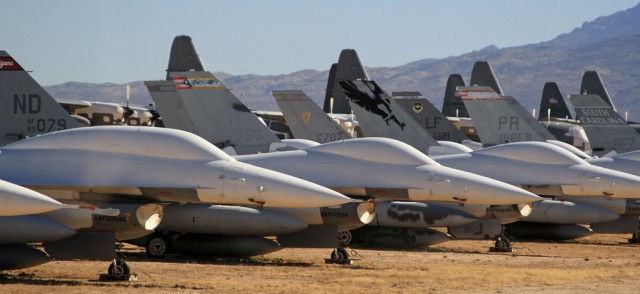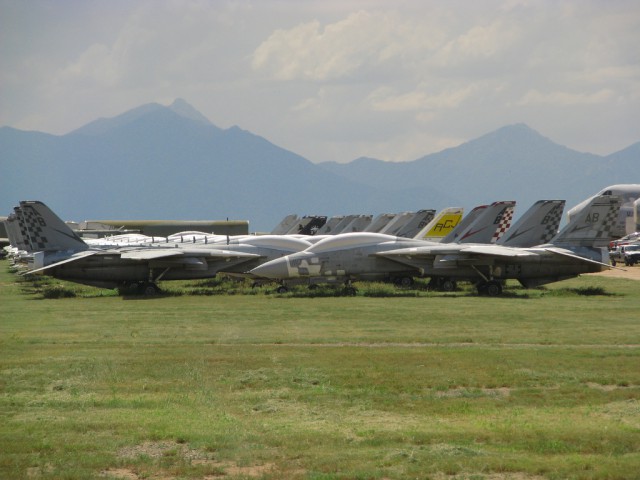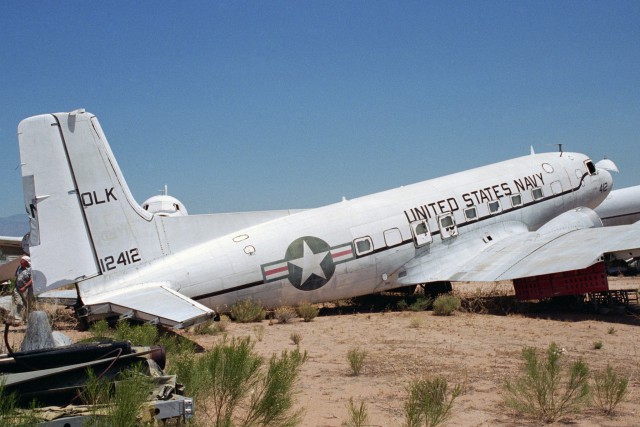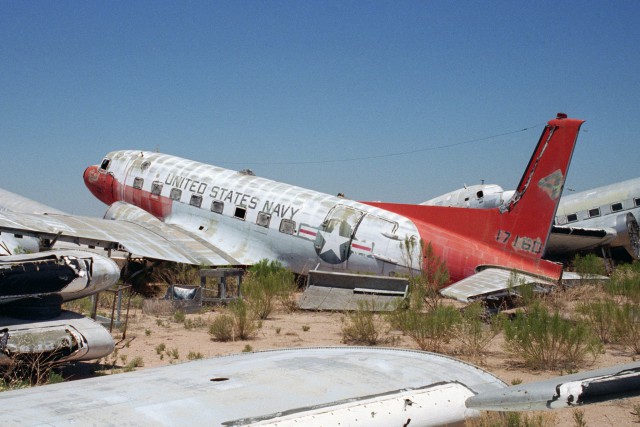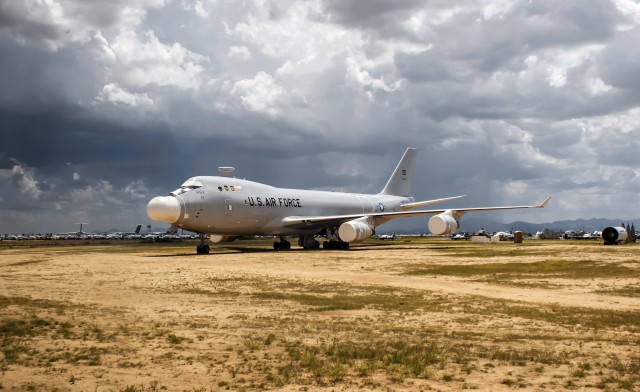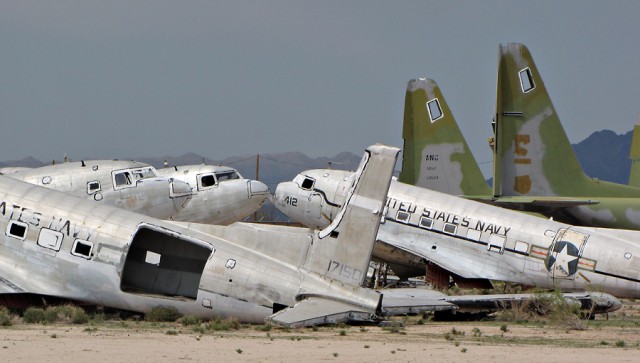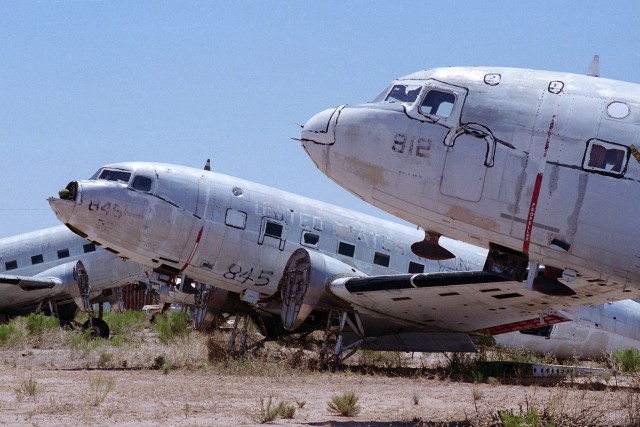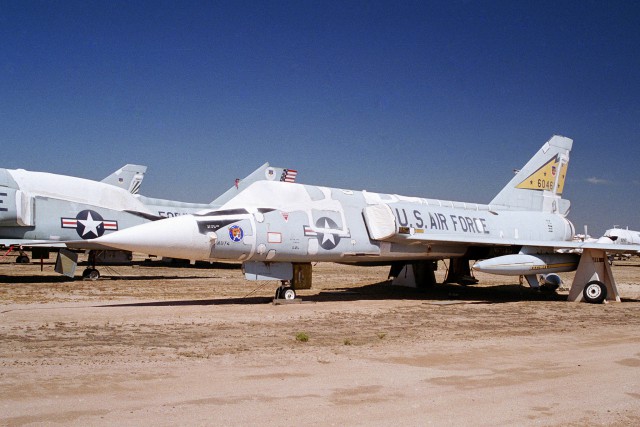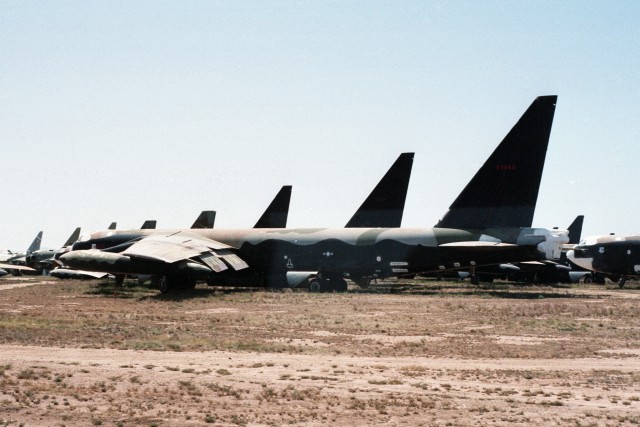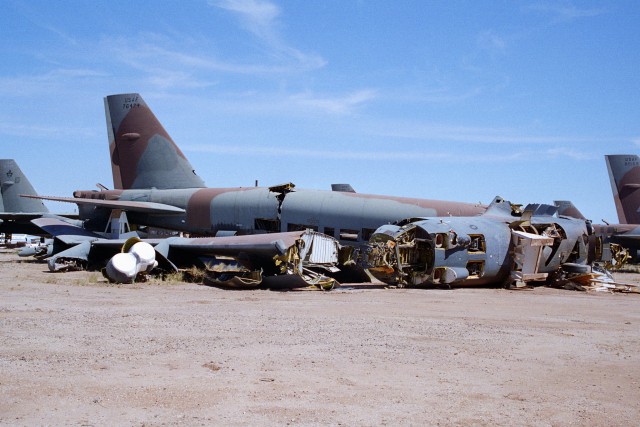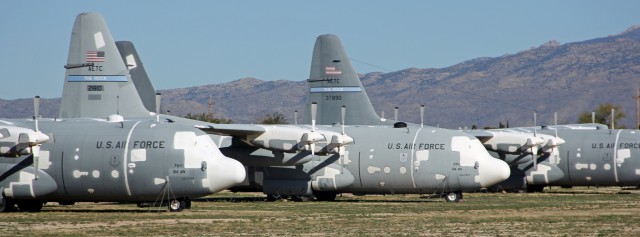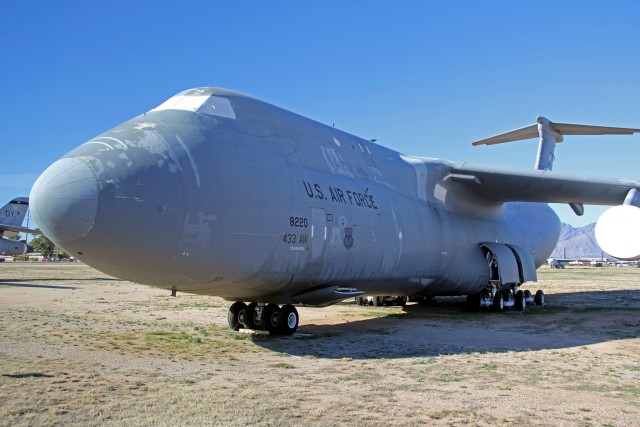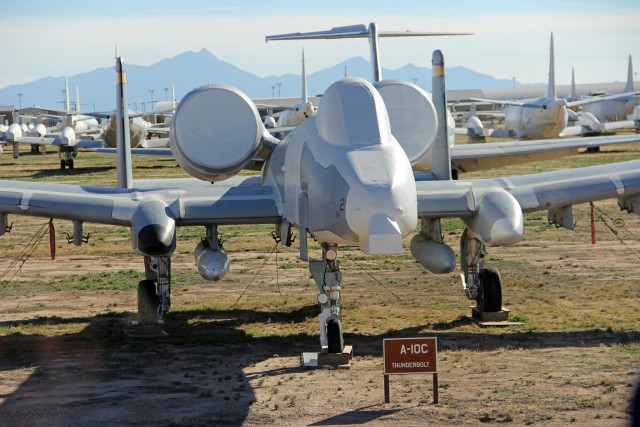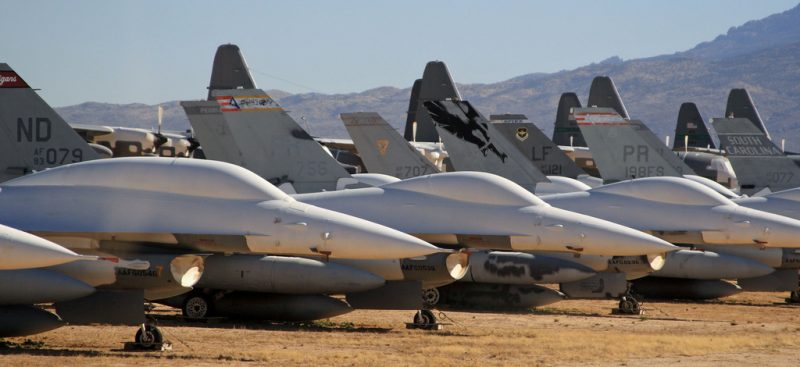The Boneyard can be found in Tuscon, Arizona, in the Davis-Monthan Air Force Base. Of course, its official title is slightly less mysterious than its evocative nickname.
On paper, this United States base is known for being the location of the 309th Aerospace Maintenance and Regeneration Group (AMARG). It’s a missile storage and maintenance facility, and has over the years become the final resting place for many different kinds of American planes. In fact, it is officially the largest storage space of its kind in the world, and it currently houses over 4,400 aircraft.
In 1946, just a year after the end of the Second World War, the site was selected and the new facility established. It was originally planned to house C-47 and B-29 type aircraft, although in the decades since it was first built it has seen a wide variety of different planes and technology being added.
The Davis-Monthan Air Force Base specifically selected because of its placement in Tuscon. The area does not experience a great deal of rain and maintains a fairly low humidity, both of which are excellent conditions for that kind of work. This – combined with its high altitude and alkaline soil – made the region a good spot for aircraft maintenance and storage, as rust and corrosion were less likely to occur.
Over the years, the Boneyard’s official name has actually changed several times. Just two years after it was first established, the unit was rebranded as the the 3040th Aircraft Storage Depot. This followed the decision to make the United States Air Force a separate service in its own right.
Another 17 years after that, the facility was once again given a new name in 1965. This time it was the Military Aircraft Storage and Disposition Center, and was now tasked with the job of servicing aircraft from all branches of the American military, rather than exclusively those of the Air Force.
Up until this point, other sections of the armed forces had run their own “boneyards”, like the Naval Air Station in Goodyear, Arizona, but now the base in Tuscon had widened its focus. In the case of the Naval air base in Arizona, roughly half a thousand aircraft were removed from their unit and transported to Tuscon.
This gradual expansion in the different types of aircraft that the base is charged with handling has been a continuous theme for the facility. In the 80’s they were given yet another new name – the Aerospace Maintenance and Regeneration Center. This was as a direct result of the fact that they had now progressed to working with almost all forms of aerospace assets and equipment.
Then, in 2007, the unit underwent its most recent name change and became the 309th Aerospace Maintenance and Regeneration Group, as we know it today.
As well as acting in its official capacity, the Boneyard has over the years featured in a number of major Hollywood movies, including blockbusters like Transformers: Revenge of the Fallen, released in 2009. In its own right, however, the base is a popular tourist attraction, and the Pima Air and Space Museum runs regular bus tours through the site.
Aside from these tours and a 10K public run that is held once a year on the base, the Boneyard is off limits to anyone without official clearance. Because of this restricted access, a virtual tour of the base is an exciting opportunity, and one you can experience here.
These striking and high quality photographs show a wide variety of aircraft awaiting redeployment or destruction. From a powerful Lockheed C-130 Hercules to the first – and last – Boeing YAL-1 Airborne Laser, these images show the incredible range of modern-day and historical planes housed here today.
